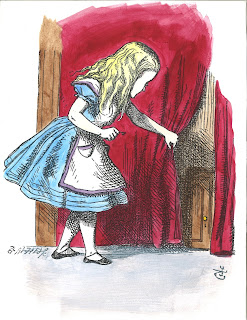Abstracts
of papers appearing in Topics in Recreational
Mathematics Volume 1, edited by Charles Ashbacher. Artwork by Caytie Ribble
Does Bill James’s Pythagorean Formula
Apply to Basketball?
Allen S. Jackson, Jamal R. Piper, James R. Jensen, Paul
M. Sommers
Middlebury College
Abstract
In 1980, baseball writer and statistician Bill
James developed a formula that related a baseball team’s won-lost percentage to
the number of runs they scored and allowed.
This formula was modified in the mid-1990s for use in professional
basketball, with points scored and allowed in lieu of baseball’s runs scored
and allowed. This paper empirically
tests the modified formula using data on all teams in the National Basketball
Association, by conference, from 2011-12 through 2013-14 (which included one
strike-shortened season). The authors’
regressions are also used to identify “overachievers” and “underachievers” in
each conference in each of the three seasons.
Will
Sochi be the Last Games Featuring NHL Players?
Kaelin
A. Stone, Paul M. Sommers
Middlebury
College
Abstract
National Hockey League (NHL) players have
participated in the Winter Olympics since 1998.
Recently, some NHL owners have voiced concern that the Olympic hiatus
hurts home attendance. The authors
examine home attendance for each NHL team before and after the Winter Games in
Vancouver, Canada (2010) and Sochi, Russia (2014). A series of two-sample t-tests before
and after the break reveal that all but two of thirty teams experienced an
increase in home attendance following the break in 2010 and again in 2014.
In most cases, the increase was statistically significant, suggesting no
erosion in a team’s fan base.
Chart
Statistics of the Beatles and the Rolling Stones
Paul M. Sommers
Middlebury College
psommers@middlebury.edu
Abstract
Point totals based on weekly chart positions
on Billboard’s “Hot 100” singles chart from 1964 to 1970 are used to first
gauge the relative success of songs written by Paul McCartney and John Lennon
and then to assess the relative popularity of singles by the Beatles and the
Rolling Stones. A series of two-sample t-tests
reveals that McCartney’s compositions averaged more points, reached a higher
peak position, and spent more time on the charts than did Lennon’s
compositions. The Stones’ hit singles were no more (or less) popular than the
Rolling Stones, using the same three criteria.
A Poisson Model For Hurricanes Of The North Atlantic
Paul M.
Sommers
Middlebury
College
Abstract
Between 1886 and 1996, a total of 554 hurricanes were reported in the North Atlantic basin, an area that includes the North Atlantic Ocean, the Caribbean Sea and the Gulf of Mexico. Using data on the annual number of hurricanes in the North Atlantic basin over this 111-year period, the author shows that the Poisson probability distribution provides an excellent fit to the data.
Between 1886 and 1996, a total of 554 hurricanes were reported in the North Atlantic basin, an area that includes the North Atlantic Ocean, the Caribbean Sea and the Gulf of Mexico. Using data on the annual number of hurricanes in the North Atlantic basin over this 111-year period, the author shows that the Poisson probability distribution provides an excellent fit to the data.
The Cost of Attending
Professional Sports in the U.S.
Parker A. Hurst, Paul M. Sommers
Middlebury College
Abstract
This paper examines how Team Marketing Report’s
Fan Cost Index (FCI) for 113 professional sports teams located in the U.S.
varies across different parts of the country in each of the four major North
American sports (baseball, football, basketball, and hockey). A series of two-sample t-tests on the
constant dollar FCI (adjusted for differences in prices in the four census
regions) reveals no discernible differences in a given sports league across
census regions, but huge differences between sports leagues within any
given census region (football games are the most expensive, while baseball
games are the least expensive).
A
biLLies Puzzle
Charles Ashbacher
Charles Ashbacher Technologies
cashbacher@yahoo.com
Abstract
A biLLie is a polyomino made from two
L-trominoes placed side to side. There are fourteen such figures and they are
all displayed. A figure that consists of 84 squares is given and the question
as to whether the 14 biLLies can be used to tile it is asked.



No comments:
Post a Comment